Page One
Western Cuernavaca, Morales, México.
George & Eve DeLange
Google Map To Xochicalco Archaeological Ruins
In Western Cuernavaca, Morales, México.
The Ruins Is On The Left, Museum On The Right.
Click On Any Of The Following Links By Amazon.Com
For Books Or Videos About The History Of
The Nahuatl Speaking People. No Obligation!
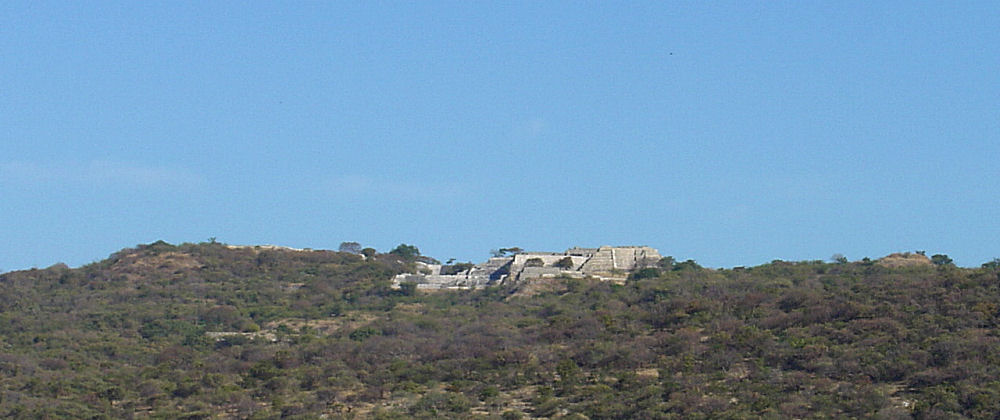
Xochicalco Archaeological Ruins From The Museum.
 |
| Xochicalco Archaeological Ruins From The Museum. |
|---|
Xochicalco ("sho-chee-cal-co") Archaeological Ruins: The name Xochicalco may be translated from Nahuatl language as "in the (place of the) house of Flowers". Antonio Iriondo drove us to the Xochicalco archaeological site which is located about 38 Kms. from Cuernavaca, by way of the Alpuyeca exit of the Mexico-Acapulco Highway 95. Xochicalco was founded in about 650 AD by the Olmeca-Xicallanca, which are a Mayan group of traders from Campeche, giving them an excellent position along several of the major Mesoamerican trade routes. It was an important fortressed commercial and religious center in the period of time following the decline of the great Meso-American city states. Its name means "Place Of The Flowers." The origins of the Olmeca-Xicalanca are not known with certainty, but they are assumed to come from the Gulf coast region, and were perhaps Maya settlers who arrived in this part of central Mexico around 400 CE. The main part of Xochicalco is located 132 mts (430 ft) above the valley. Its' underground solar observatory is one of the main attractions for visitors to the site. When the sun passes through its zenith on May 14th and 15th and July 28th and 29th, a ray of sunlight passes through a narrow shaft in the ceiling of the observatory and projects itself upon the floor. Another main attraction is the Quetzalcoatl pyramid, or Temple of the Feathered Serpent, which features friezes depicting the Plumed Serpent God coiling around the sides. This structure measures 21 by 19 meters at its base and 17 meters in height and is situated in what is known as Xochicalco's Main Acropolis. Of special interest are sculptured reliefs on the sides of some buildings. The Temple of the Feathered Serpent has fine stylized depictions of that deity in a style which includes apparent influences of Teotihuacan and Maya art. The museum and restrooms are clean.
|
To visit this area we would suggest flying into either Mexico City or Cuernavaca and then staying at a hotel of your choice. The Mexico City International Airport (Spanish: Aeropuerto Internacional de la Ciudad de México or AICM), also called Benito Juárez International Airport (IATA: MEX, ICAO: MMMX) is the commercial airport that serves Mexico City, the capital of Mexico. It is Mexico's and Latin America's busiest. The General Mariano Matamoros Airport (IATA: CVJ, ICAO: MMCB), also known as Cuernavaca Airport, is the airport located in Cuernavaca, Morelos, Mexico, near Mexico City. It handles national and international air traffic for the city of Cuernavaca. It is part of the Mexico City Metropolitan Airport Group, as are the airports of Puebla, Queretaro, Pachuca, Mexico City, and Toluca. The airport is operated by the government-owned corporation Aeropuertos y Servicios Auxiliares (ASA). It was recently renovated with the purpose of offering a fresh image, and modern facilities, and its composed of a sole building (excluding general aviation terminal, hangars, and control tower), with check in facilities, security check-points, a cafe, ATM, customs, waiting room and a sole boarding gate.
There are many very good hotels and motels in the area, and if you need a place to stay; Priceline.com can arrange that for you. In fact, we think they are the best way to do it! We have personally, booked flights, hotels, and vacations, through Priceline.com and we can highly recommend them. Their website is very easy to use! We have some links to Priceline.com on this page, since they can arrange all of your air flights, hotels and car. We of course, appreciate your use of the advertising on our pages, since it helps us to keep our pages active. We also have links on this page, that will connect you with several of the best hotels in Mexico City & Cuernavaca. Hotels that we have personally used! We could, also suggest getting a hotel, and then letting them arrange for either a car, or a tour of Mexico City & Cuernavaca. If you call their Concierge Services, ahead of your arrival, all of this can be pre-arranged for you. We have used this method, many times, when traveling in Mexico. We have found it to be safe and it works!!! We have never experienced a problem, doing it this way! Therefore, we have placed links to Priceline.com on this page so you can arrange your flights into and out of Mexico City or Cuernavaca; as well as your hotel, when visiting this area.
|
 |
| Plaza Of The Stele Of The Two Glyphs, Laguna del Rodeo In Background. |
|---|
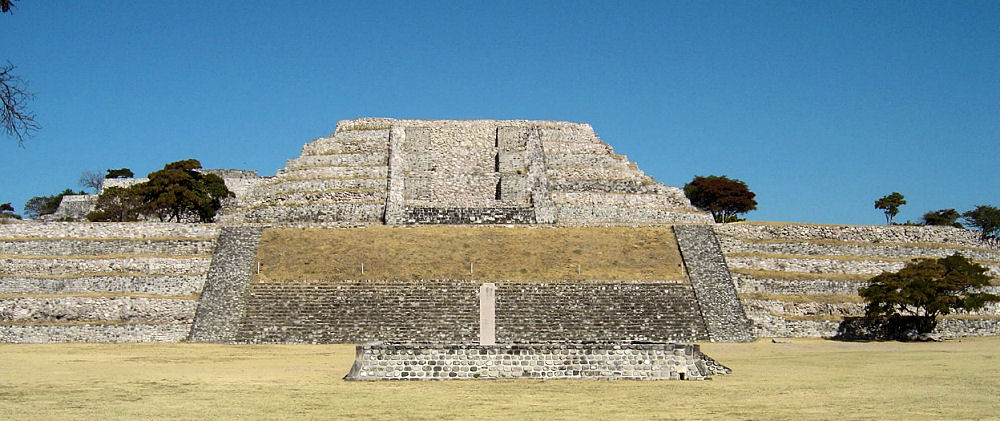 |
| Plaza Of The Stele Of The Two Glyphs, Looking North Toward The Great Pyramid. |
|---|
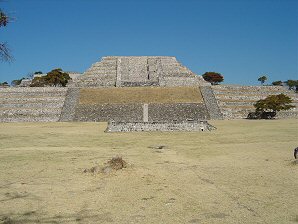 | 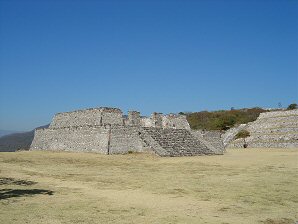 |
| Plaza Of The Stele Of The Two Glyphs Looking North Toward The Great Pyramid | Plaza Of The Stele Of The Two Glyphs Looking WNW |
|---|---|
 | 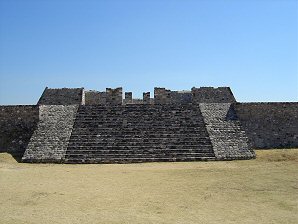 |
| Plaza Of The Stele Of The Two Glyphs Looking North East | Plaza Of The Stele Of The Two Glyphs Looking East |
 | 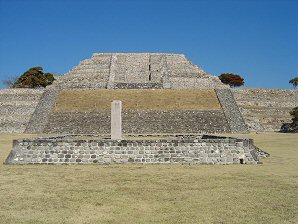 |
| Antonio Iriondo & George DeLange Discussing The Plaza Probably A Civic - Religious Area | Stele Of The Two Glyphs Sitting On Platform Called An Adoratorio Looking North |
 |  |
| Stele Of The Two Glyphs Looking West Probably Was A Gnomon | Stele Of The Two Glyphs Represent 10 Acatl And 9 Ojo de Reptil Probably Related To Quetzalcoatl |
 |  |
| The Great Pyramid Made In Seven Layers | Side Of The Great Pyramid The Largest Structure In Xochicalco |
 | 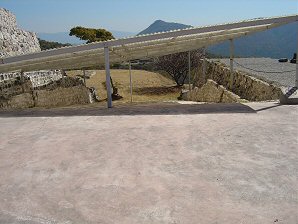 |
| North And NE Of Great Pyramid Covered Area Is Ceremonial Ramp Made Of Steps With Carved Animals Called Ramp Of The Animals | Ramp Of The Animals |
 | 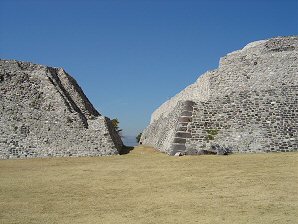 |
| NE Side Of Great Pyramid | Between Great Pyramid & Temple Of The Stele |
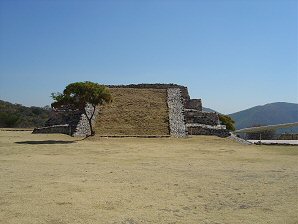 | 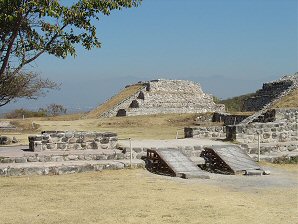 |
| Structure North Of Animal Ramp | North Structure |
 | 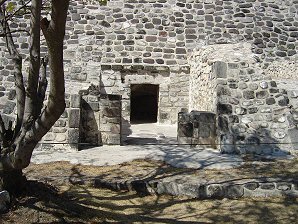 |
| Structure Seven | Doorway, Structure Seven |
We Are Proud Of Our SafeSurf Rating!
Click On Any Of The Following Links By Amazon.Com
For Books Or Videos About Touring In Mexico. No Obligation!
Here Are Some Links To The Very Best & Most Popular Items Sold On Amazon.Com
To Learn More! Click The Links Below. No Obligation, Of Course!
Here Are Some Links To The Very Best & Most Popular Items Sold On Amazon.Com
To Learn More! Click The Links Below. No Obligation, Of Course!



